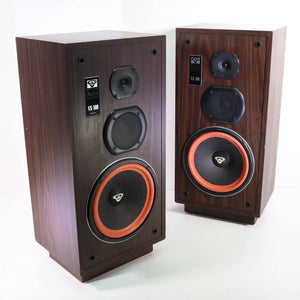We are unable to reply to comments, so please message us directly if you have a specific question regarding products, shipping costs, etc. Our office number is (480) 207-1511. Our email is hello@spencertified.com. You can also message us on Facebook. Commonly asked questions and answers can be found on our FAQs page here.

BACK TO BASICS: COAXIAL VS OPTICAL
WHAT’S THE DIFFERENCE BETWEEN DIGITAL COAXIAL AND DIGITAL OPTICAL CONNECTIONS?
If you’re a newbie to the world of vintage home audio or a neophyte audiophile who’s just started gathering your own equipment, all the connections you see on the back of an audio/video receiver can get overwhelming. So many sockets, so little time, right?
Some connections you may be more familiar with, such as HDMI. When it comes to modern convenience, that’s usually the go-to. But we wanted to clarify two other audio connections you’re bound to run into but may not be as familiar with: optical and coaxial.
So let’s break down the similarities and differences between the two!
SIMILARITIES

Both digital optical and digital coaxial are, well, digital. Okay, that’s pretty simple. But that is their biggest and most important similarity. They transmit audio signals from a component like a CD or DVD player to a receiver or recording device. In other words, both use cables that move the audio signal in a digital (not analog) format. Neither one is capable of transmitting video signals.
COAXIAL DIGITAL

A digital coaxial connection uses electricity to transfer audio signals. It uses an RCA-type cable where the circular RCA connectors are at the ends of an audio cable; however, it’s important to note that you shouldn’t use a standard RCA cable in place of a coaxial cable! A dedicated digital coaxial cable has different impedance values and is designed to handle the wider frequency bandwidth of the digital audio bit stream.
Coaxial digital connections are not as common as optical connections on more modern equipment, but you’re still bound to run into them on certain receivers and integrated amps. It has solid bandwidth available, supporting audio up to 24-bit/192kHz. However, digital coaxial does offer the potential for interference due to the transfer of electrical noise. Plus, unlike a connection such as HDMI, coaxial can’t support some surround sound formats such as Dolby Atmos and DTS:X.
OPTICAL DIGITAL

A digital optical connection uses a fiber optic cable to transfer audio signals. This means that pulses of light transmit the audio bit stream and carry the audio through the cable’s optical fibers. These fibers can be made from plastic, glass, or silica, and don’t allow noise or interference to pass from the source (like a DVD player) to DAC circuitry.
Optical connections tend to be more commonly found on more modern home theater equipment, such as video game consoles, Blu-ray players, set-top boxes, and televisions, as they tend to transmit compressed Dolby Digital and DTS surround sound. And in terms of bit rate and bandwidth, the general standard of optical has typically been defined at 96kHz. But it’s important to note that optical can absolutely support 192k bandwidth (same as coaxial). If your source can send it, and your amp’s DAC can receive it, optical SPDIF can deal with any bit rate within the bandwidth limitation.
However, it can’t support more than two channels of uncompressed PCM audio, and while it does support some multi-channel audio formats such as Dolby Digital and DTS, it can’t support other Dolby formats such as Dolby TrueHD.
WHICH IS BEST?

So, which is best? In terms of differences in audio quality, you’ll get mixed answers depending on who you ask (as is the norm when it comes to sound). Some swear by the audio quality that coaxial connections offer and vouch for their higher level of detail and dynamics. Others are firm that optical sounds better in the end, as it’s impossible to get any interference caused by bad grounding or EMI. And there are plenty who confirm that you can’t hear any differences at all - after all, they’re both digital.
Some prefer one over the other for other reasons, too; for example, optical technology presents fewer issues with latency.
Of course, the digital cable is only one part of the equation. What happens immediately before and after also influences the sound. You’ll get a different audio experience depending on your streamer and DAC capabilities.
Bottom line? If your component and receiver have both, give them each a try! Entry-level digital coaxial and digital optical cables aren’t very pricey, and it may be worth experimenting. Plus, it’s always handy to have a cable for each type - just in case.
SUMMARY
Thanks for reading! We hope this breakdown of their similarities and differences help you better understand what these old-school coaxial digital and optical digital connections have to offer. And if you’re searching for a home base audio/video receiver with coaxial and/or optical connections, we’ve got you covered! You can find our collection of refurbished receivers for sale here. Have a great day!
https://spencertified.com/collections/home-audio-amplifiers



Leave a comment